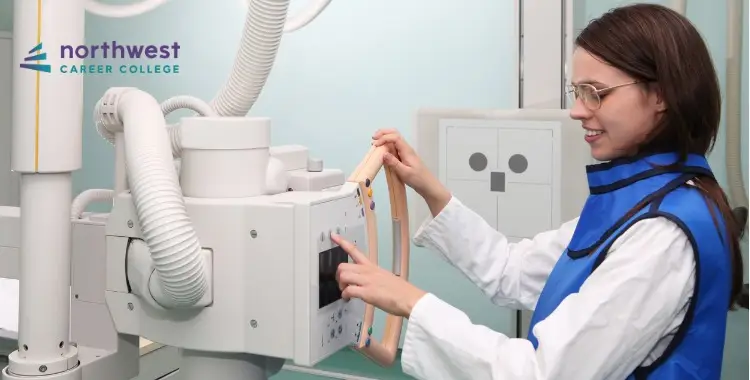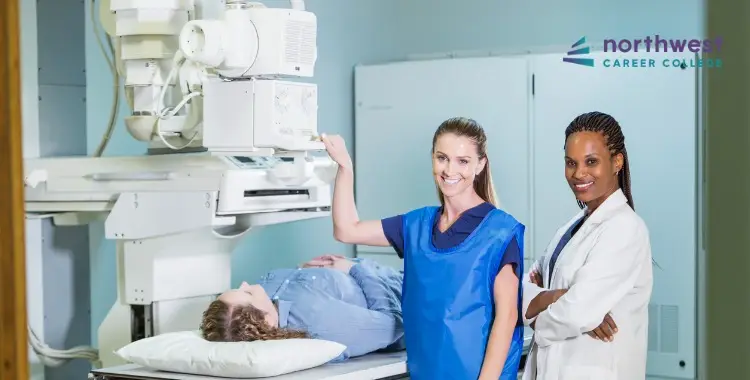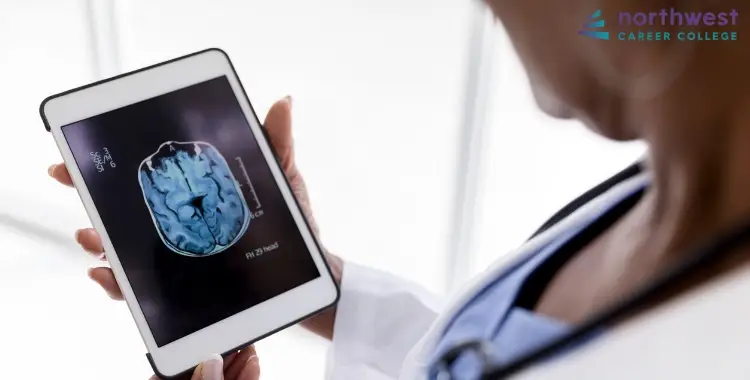Radiation Safety: How Radiography Technologists Protect Themselves
- Radiography
- April 10, 2025
- 44 views
- 4 min read

As a Radiography Technologist, you will use specialized equipment to capture images of the inside of the body. These help the doctors understand what is happening inside the patient’s body and help them diagnose problems.
Since radiography deals with radiation, the patients and technologists must be kept safe. Low exposure to Radiation is helpful for medical imaging, but it can be harmful if protective measures are not taken.
This article identifies how radiography technologists protect themselves, their patients, and everyone in the health setting from radiation hazards. Knowing all these precautions is highly important for those who want to pursue this course.
Table of Contents
What Is Radiation and How Is It Used in Radiography?
Radiation is energy in waveform. It is used in radiography, which uses waves of ionizing radiation to create images of the human body’s interior for diagnostic purposes and several types of X-rays, CT scans, and mammograms.
These pictures can identify bones, organs, and tissues that cannot be seen outside. Radiation helps doctors visualize the inside of the body to diagnose injuries, illnesses, or conditions ailing the Patient.
Even with all the safety precautions, a risk is still involved when it is not done correctly. Radiation can harm the cells of an organism and, in the long run, could develop health problems such as cancer. For this reason, a radiography technologist should always ensure that safety measures are strictly followed.
How the Radiography Technologists Protect Themselves
Personal protective equipment (PPE) for radiography technologists includes lead aprons, gloves, and shields designed to reduce radiation exposure. These materials help block or minimize the amount of radiation reaching the skin.
For example, a lead shield protects the technologist’s core while they operate imaging equipment. Shields can also be placed over specific areas of the patient’s body, such as the thyroid or eyes, to provide additional protection.
Furthermore, the more the body is exposed to radiation, the more damage it causes. To keep the exposure time as small as possible, you must spend as little time near the radiation source as possible.
Additionally, you must always wear monitoring devices, known as dosimeters, that measure quantities of radiation exposure a technologist receives during a shift. Dosimeters are devices that quantify radiation coming in contact with the technologist to keep exposure levels within an acceptable value or level.
How Radiography Technologists Protect Their Patients
Radiologic technologists are well-trained to adjust the machine to use the absolute minimum amount of Radiation possible while capturing a consistent image. Therefore, it helps minimize patient exposure and yet captures the information a doctor may need.
Protecting the Patient: Lead aprons, thyroid shields, and other protective coverings are placed over portions of a patient’s body that do not need to be imaged to help keep Radiation concentrated on the area of interest and not on portions of the body that do not need exposure.
Proper positioning: It shows the exact imaging with a minimum radiation dosage to the patient. Radiography technologists are always thorough with the positioning so that X-ray or scan zeroes in on an area of interest. This can help avoid repeat images and unnecessary radiation exposure.
Informed Consent: Radiography technologists always tell the patients what the examination will entail and why it is necessary. They explain how the procedure will work, the time it will take, and any safety precautions to be taken, which helps not only ease the Patient but also maintain stillness throughout the exam, improving the image quality and reducing the need for repeat scans.
Conclusion
Northwest Career College is ideal for students wanting to get more information regarding their next education step within a radiography department and safety, personally and regarding the patient. The skill-building and hands-on experience keep coming with our well-established Radiography Program here. Completing this 18-month program will enable you to sit for your ARRT certification examination to launch your profession as a Radiography Technologist.




